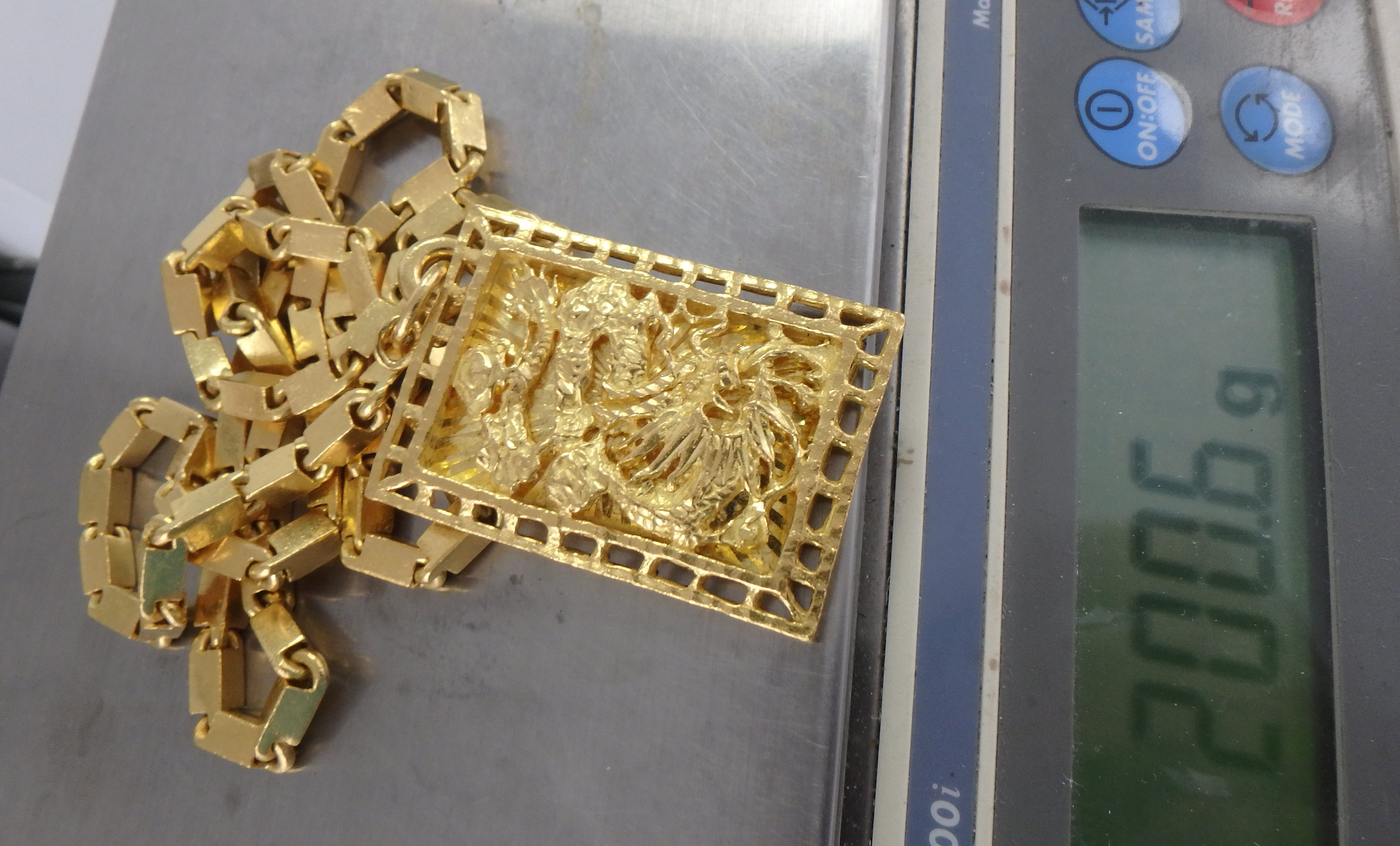TRUE GOLD CONTENT OF
24 KARAT GOLD CHAINS
Part 2
UNDERSTANDING 24K GOLD CHAINS

The 24K Standard
That brings us to what qualifies as “24K gold”. The Karat standard is ancient. It may go as far back as Roman times and before. For sure it was already in use in the 1100s in what today we know as Great Britain. At that time, their technology was such that at most they could only ascertain gold fineness in increments of 1/24th. Thus, 18 Karat means 18 parts out of 24 are fine gold. The top fineness given this fineness grading system is 24K. That means 24 parts out of 24 are fine gold.
The Parts Per 1,000 Standard
By modern standards, fineness increments of 1/24th are too large. Modern fine gold is now graded in parts per 1,000. Thus, modern fine gold, graded in 1000th increments. However, due to tradition, convenience, and practicality, we still use the Karat for general reference. Basically, the 24K standard is easier to deal with because it is of its much larger increments. However, it is much less exacting. In the parts per 1,000 standard, 18K is represented as 750. That is because 18 divided 24 multiplied by 1,000 equals 750.
Overall Fineness and Fabrication of 24K Chains
As mentioned above, a chain is made out of interlocked links. That the chain is made of 999 fine gold links does not necessarily mean that the chain, as a final product is fine 999 gold. However, it may still qualify as 24K or close to it.
High karat gold chains, specially 24K are usually built by first creating gold wire. The links are made by retooling the wire into the desired shape. Unless the design of the chain is such that the links do not need to be soldered shut, like in for example certain rope chain designs, solder will be needed to close the links.
The more and the smaller the links, the more solder will be needed. The reason is evident. Large links span longer that short links. It takes proportionately much less solder to close a few large links than several smaller links if all else is equal.
In order to be effective, solder needs to melt prior the material being soldered melts at. Thus, soldered is formulated with lower melt temperature materials. For example, 24K solder is solder that is designed to solder 24K gold in the most inconspicuous manner. So 24K solder will be close to 24K gold but have typically some silver and maybe other elements in it. As such, 24K solder is typically closer to 22K.
The more solder is applied in fabricating a 24K gold chain, the more “impurities” are added to the overall fine mas. The result is that, after the fabrication, the chain still qualifies as 24K gold, but that is because the karat standard is of large increments. However, the overall fineness of the chain, as whole monolithic mass will most likely be instead of 999 parts for 1,000(the original gold fineness of the links), more like 970 parts per 1000 pure. That is a super high gold fineness for a jewel.
Getting Scientific
As I mentioned above, anyone can say anything. Talking is for free. So, this is what I did. I bought a wonderful, 200 grams, Chinese gold chain and medallion. As you can see, this chain is of the highest gold fineness and most talented craftsmanship possible. The care that went into the fabrication of this jewel is such that the goldsmith crafted the chain to also be of as high gold fineness as humanly possible. Not only that, but the links are large, which minimizes soldering. Even like this, the See above. I sent it to melt and tested after melt product with and XREF device. The after-melt scientific testing of the chain came at 961 parts per 1000 fineness. Thus, the fineness, when measured in increments of 1/24th, yes, the chain is 24K. However, when measured in terms of parts per 1,000, the chain measure in fineness as much less pure. Nothing is wrong with the gold chain though. It is just that the expectations need to be adjusted.

Conclusion
Unless there is fraud, most 24 Karat gold chains qualify at 24K, but are not really pure gold. However, they are remarkably close to it. The reason for this is that the fabrication process usually dictates that impurities are introduced. The main impurity is usually in the soldering needed to close links, attach clasps, etc. The more solder in the chain, the lower the fineness of the overall mass. However, if well made, the chain will still qualify as 24K in the karat fineness standard. In the parts per 1,000 fineness standard, the impurities will show more because the increments of fineness are 1000ths rather than 24ths.


![[Most Recent Quotes from www.kitco.com]](http://www.kitconet.com/charts/metals/gold/t24_au_en_usoz_2.gif)
![[Most Recent Quotes from www.kitco.com]](http://www.kitconet.com/charts/metals/silver/t24_ag_en_usoz_2.gif)
![[Most Recent Quotes from www.kitco.com]](http://www.kitconet.com/charts/metals/platinum/t24_pt_en_usoz_2.gif)










